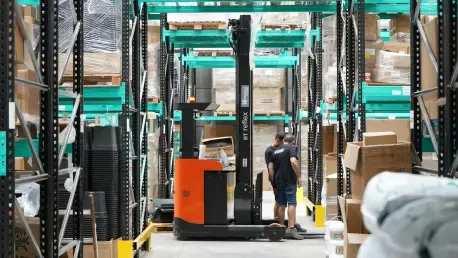The rapidly evolving landscape of retail logistics is undergoing a profound transformation, with advanced robotic systems reshaping warehouse operations. This trend marks a departure from traditional methods as an increasing number of companies turn to automation to enhance efficiency, reduce costs, and maintain competitiveness. The integration of robots in warehouses is not merely a futuristic vision but a present-day necessity, driven by factors such as labor shortages, rising demand, and the pursuit of faster fulfillment times. In this context, industry leaders like Ocado Intelligent Automation (OIA) are pioneering efforts that demonstrate the practical benefits of adopting automated solutions within retail environments.
One notable example of robotic innovation in warehousing comes from Ocado’s collaboration with Performance Health. This partnership underscores the practical advantages achievable through the integration of Ocado Mobile Robotic Solutions (OMRS). By leveraging these systems, Performance Health has successfully increased throughput, optimized in-aisle processes, and significantly reduced travel time on the warehouse floor. These improvements have been achieved without the need for extensive capital expenditures or infrastructure changes, offering a pragmatic approach to automation. Such advancements highlight the broader industry shift toward adopting intelligent automation strategies to meet modern logistics demands.
Transformative Impact of Intelligent Fulfillment
The transformation of warehouse operations through intelligent fulfillment has become a central theme in discussions on automation in logistics. Spearheading these efforts, Jeff Larson from Ocado Intelligent Automation plays a pivotal role in developing and deploying cutting-edge storage and retrieval systems. His insights into the necessity of high-speed and error-free processing have positioned him as a key figure in fostering a new era of logistics efficiency. Recognized by industry accolades such as the 2024 Corporate Value Award for Aligned Autonomy, Larson’s contribution exemplifies how strategic technological integration can meet and exceed current logistics standards.
The emphasis on speed and accuracy in fulfillment processes aligns perfectly with the urgency to adapt to contemporary logistics challenges. As consumer demands rise and the e-commerce sector continues to expand, warehouses must operate at unprecedented levels of efficiency. Automation facilitates this by minimizing the margin for human error and significantly accelerating order processing times. This shift not only improves customer satisfaction but also provides businesses with the agility necessary to meet unpredictable market demands. The innovations presented by thought leaders like Larson demonstrate a clear pathway for companies seeking to navigate and thrive in a rapidly changing industry landscape.
Adapting to Robotic Integration
Transitioning to automated warehouse operations requires more than just technological investment; it necessitates a cultural shift within organizations. Ryan Hetzler from Performance Health offers valuable insights into the journey of embracing robotic solutions. Drawing from extensive experience in logistics across diverse industries, Hetzler explains the blend of challenges and successes encountered throughout the automation process. His perspective reveals important lessons such as the critical role of leadership in fostering innovation and the need for careful planning to ensure successful implementation. Such factors prove instrumental in maximizing the potential of robotic systems and avoiding common pitfalls.
Moreover, deploying Autonomous Mobile Robots (AMRs) provides businesses with flexible and scalable solutions, particularly during peak seasonal demands. AMRs help address labor constraints by reducing the need for temporary staffing and enabling a more efficient use of available personnel. This adaptability is crucial for navigating fluctuating demand and supports the broader trend toward operational resilience in logistics. By sharing his firsthand experiences, Hetzler offers a roadmap for companies contemplating or expanding their automation strategies. The practical insights gathered from industry pioneers such as Hetzler empower businesses to undertake meaningful transformations that align with modern logistics requirements.
Future Considerations and Insights
The landscape of retail logistics is swiftly evolving, with advanced robotic systems significantly transforming warehouse operations. This shift marks a move away from traditional methods as more companies embrace automation to boost efficiency, slash costs, and stay competitive. The use of robots in warehouses is no longer just a futuristic idea; it’s a current necessity driven by labor shortages, increased demand, and the need for faster fulfillment. Leading the charge in this area is Ocado Intelligent Automation (OIA), which showcases the real-world benefits of adopting automated technologies in retail settings.
Ocado’s partnership with Performance Health exemplifies this robotic innovation in warehousing. Through Ocado Mobile Robotic Solutions (OMRS), Performance Health has enhanced throughput, optimized in-aisle processes, and reduced travel time on warehouse floors, all without extensive capital spending or major infrastructure changes. This strategic approach to automation highlights a broader industry trend towards intelligent automation, meeting the demands of modern logistics efficiently and effectively.









